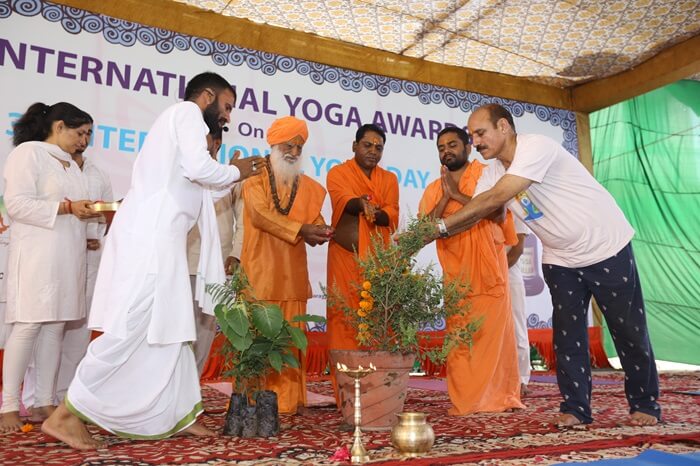Experience True Rest with Yoga Nidra

How many times have you felt exhausted yet couldn’t get your mind and body to rest? How often do you find yourself tossing and turning in bed, unable to fall asleep? Have you relied on sleeping pills, only to wake up feeling groggy? Or perhaps you’ve been diagnosed with insomnia by a specialist. If you answered yes to any of these questions, you’re not alone.
These issues may be diagnosed under various names such as insomnia, sleep apnea, restlessness, stress, or depression. However, there is one effective remedy with no side effects: Yoga Nidra, also known as yogic sleep.
What is Yoga Nidra?

For those unfamiliar with the term, Yoga Nidra is a state of consciousness where a person achieves deep relaxation while remaining awake. Also referred to as psychic sleep, Yoga Nidra guides you through your consciousness, allowing you to remain relaxed and unaffected by external factors. It helps you reach a state where you feel completely rested and at peace.
Yoga Nidra vs Meditation
Some may confuse Yoga Nidra with meditation, but they are distinct practices. Unlike meditation, which requires intense focus and concentration, Yoga Nidra encourages you to let thoughts, ideas, and feelings flow freely through your body. The practice involves observing these sensations without interference, allowing you to reach a profound state of rest and awareness.
Also Read: The Benefits of Yoga and Meditation
Stages of Yoga Nidra Meditation
Preparation Stage:
- Cleanse your body internally and externally. Practice Yoga Nidra on an empty stomach.
- Choose a clean, clutter-free space.
- Lie down in a comfortable position, such as savasana, and close your eyes. Pay attention to your surroundings and welcome any sensory inputs.
Resolution:
- Make a positive and kind resolution. Commit to fulfilling this vow with determination.
Circulation of Consciousness:
- Focus on your inner being and circulate this awareness through your entire body, from right to left and top to bottom.
Awareness of Prana:
- Observe the sound and rhythm of your breath as it moves through your body. Establish a connection with your breath.
Counteractive Feelings:
- Revisit memories—both positive and negative—mentally, balancing them with counteractive memories.
Activation of Imagination:
- Visualize objects or situations and experience them in your mind.
Resolution Reaffirmed:
- Repeat your resolution three to four times to reinforce your commitment and optimism.
Yoga Nidra side effects

Yoga Nidra, also known as yogic sleep, is a highly potent relaxation process that induces deep rest in the body and the mind. Despite its several benefits, including stress relief and further sleep improvement, there could be Yoga Nidra side effects for a few people. These side effects are usually mild but may include experiencing emotional vulnerability or discomfort as suppressed emotions or unresolved issues can break into the surface during practice.
Sometimes, the newcomers may feel a body restlessness or a form of anxiety while sitting still for so long in the practice of Yoga Nidra. They keep fidgeting or impatient, which would avoid their relaxation process. These reactions usually decrease with gradual habituation to the practice.
Another effect might be somnolence or excessive sleepiness immediately following a session. Because Yoga Nidra is such an intense relaxation technique, some practitioners may have difficulty becoming alert immediately at the end of a session. It is recommended to practice at a time of day that allows for easy re-entry into busy agendas and to avoid busy schedules immediately after a session.
Conclusion
Practising Yoga Nidra regularly not only enhances sleep but also offers a multitude of benefits:
- Ease of Practice: Yoga Nidra requires minimal physical or mental effort, making it accessible to everyone, regardless of age or gender.
- Self-Awareness: It helps you connect deeply with your inner self, fostering a sense of security.
- Stress Relief: Reduces tension and stress from both mind and body.
- Mental Clarity: Improves memory, sharpens the mind, and helps regulate breathing.
- Holistic Healing: Assists in dealing with psychological disorders and alleviates negative emotions.
Don’t wait for stress to overwhelm you. Embrace the transformative power of Yoga Nidra and experience true rest. To explore Yoga Nidra further, consider joining a Yoga Teacher Training Course in India, Ayurveda Retreat, or a Yoga Retreat at Rishikul Yogshala.
For more information, explore our 200-hour Yoga Teacher Training, 300-hour Yoga Teacher Training, and 500-hour Yoga Teacher Training programs.















